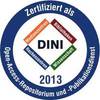Preview |
PDF, English
- main document
Download (5MB) | Terms of use |
Abstract
The current dissertation aimed to investigate the impact of childhood adversities on brain function and connectivity in a cohort of participants followed since their birth by allocating specific attention into cumulative effects and sensitive periods. To address the co-occurrence of adversities, we conducted a principal component analysis using seven adversity measures covering different developmental periods (prenatal maternal smoking, prenatal maternal stress, obstetric adversity, lower maternal stimulation during infancy, family adversity, stressful life events and childhood trauma). This analysis resulted in a three-factor solution (factor 1: postnatal psychosocial adversities and prenatal maternal smoking, factor 2: prenatal maternal stress and obstetric adversity, and factor 3: lower maternal stimulation). Study I investigated how adverse childhood experiences, in combination (i.e., adversity factors) and in specific (i.e., single adversity measure), affected neural correlates of reward learning (expected value and prediction error signaling). Our findings indicated that the third adversity factor representing lower maternal sensitivity was associated with lower expected value signaling in the core reward network (nucleus accumnbens, putamen, pregenual anterior cingulate cortex). Lower expected value encoding in the nucleus accumbens further mediated the relationship between this adversity dimension and internalizing symptoms and predicted withdrawn symptoms during the COVID-19 pandemic. Study II examined how adversity factors and their specific contributors affected neural responses during inhibitory control. Our findings showed that the first adversity factor representing postnatal psychosocial adversities and prenatal maternal smoking was related to increased activation in several brain regions involving inhibitory control (inferior frontal gyrus, dorsal anterior cingulate cortex, supplementary motor area, and insula). Increased activation in the bilateral insula and dorsal anterior cingulate cortex was further related to lower inhibition success and higher depressive symptoms, while the right insula activation mediated the relationship between the first adversity factor and depressive symptoms. Study III investigated the impact of stressful life events on whole-brain functional connectivity during an emotion regulation task by considering the developmental timing of stress (prenatal, infancy, childhood and adolescence stress). Our findings revealed two sensitive periods for adult functional connectivity: prenatal/newborn and childhood periods. Higher stress during the prenatal period and childhood was related to lower functional connectivity between subcortical, frontal and temporal regions, which are important for emotion processing and regulation. In addition, connectivity alterations related to childhood stress were linked to higher externalizing symptoms at the time of fMRI assessment and across the COVID-19 pandemic. Taken together, these results suggest that adverse childhood experiences have a lasting impact on neural systems related to reward learning, inhibitory control and emotion regulation. The profound link between adversity-related neural alterations and psychopathology symptoms indicates that childhood adversities might increase the risk of developing psychopathology via neural alterations. Given the long-lasting negative effects of adversities, developing more effective prevention strategies for children at risk is necessary to buffer the negative outcomes of adversities on brain development.
| Document type: | Dissertation |
|---|---|
| Supervisor: | Holz, Prof. Dr. Nathalie |
| Place of Publication: | Heidelberg |
| Date of thesis defense: | 23 April 2025 |
| Date Deposited: | 09 May 2025 09:32 |
| Date: | 2025 |
| Faculties / Institutes: | Medizinische Fakultät Mannheim > Dekanat Medizin Mannheim Service facilities > Zentralinstitut für Seelische Gesundheit |
| DDC-classification: | 150 Psychology 610 Medical sciences Medicine |









